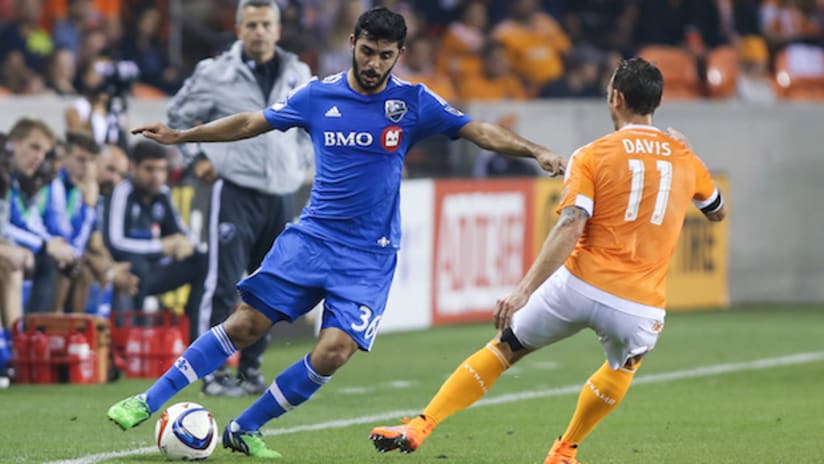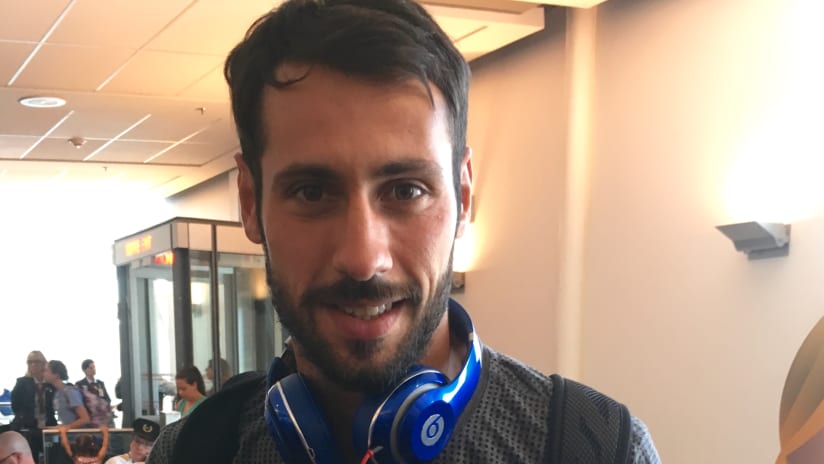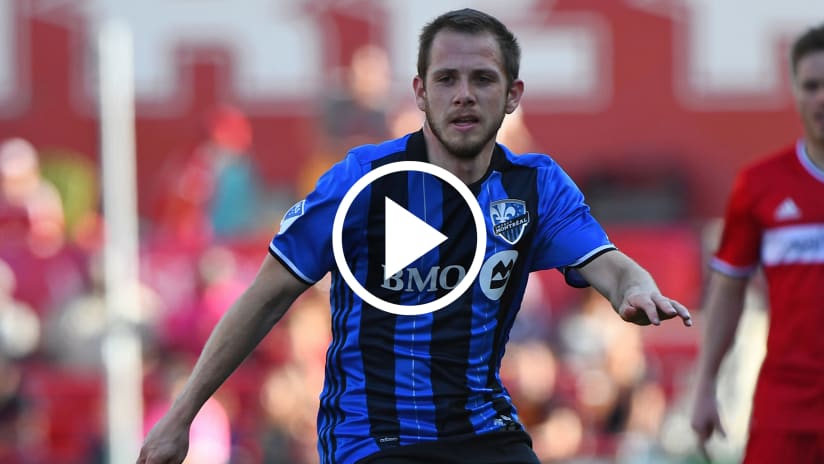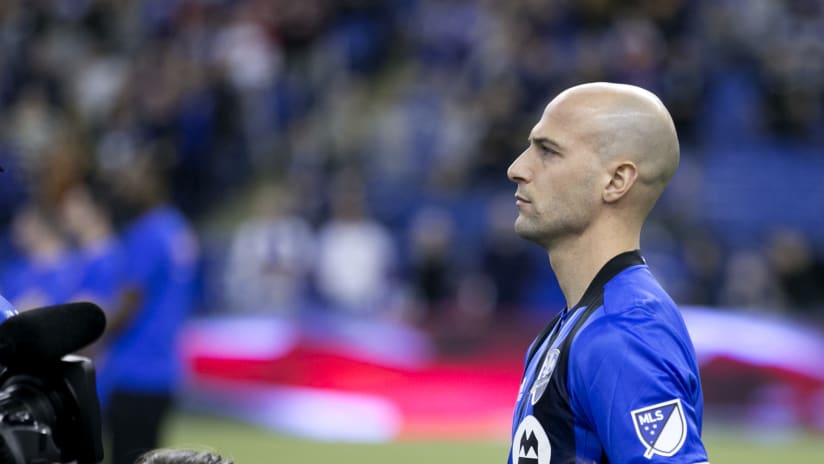Victor Cabrera doesn’t know if he’s playing this Saturday when New York City FC visit Stade Saputo for the first time. But if he is, it’ll probably be at his usual position – center back.
This may come as a surprise for fans who only know Cabrera through watching the Montreal Impact this season. Of the 745 minutes he’s played in MLS and the CONCACAF Champions League, 565 were spent at right back, a position where Montreal have faced injury woes all season. It is also a position that Cabrera had never played competitive minutes at.
“I’d like to keep learning the right back position and keep playing centrally,” Cabrera told MLSsoccer.com on Thursday. “Right now, I’m not up to the task, physically, to play right back [because I’m back from injury]. You have to be really well, physically. But I think I did all right for someone playing the position for the first time.”
Having injured his ankle in a 3-0 loss in Houston on April 11, Cabrera got his second start back from injury last Saturday, in Montreal’s 2-2 draw in Philadelphia, but at his preferred position. He admits to having struggled positionally in the first five minutes, but he was satisfied with his performance nonetheless.
His coaches were, as well, all the more so given that the pouring rain made defending trickier for everyone on the field. The staff is not ruling out more stints at right back for Cabrera. But, assistant coach Mauro Biello said, Cabrera was “scouted as being a center back.”
“He gives us options,” Biello told MLSsoccer.com. “We’re always still trying to find that right formula. I think that he’s done well at right back, and he’s a true center back. We like his profile, the way he defends one-on-one, what he brings to the game, he’s calm on the ball. There are a lot of good qualities that he brings, and we’re happy with him right now.”
Like so many players before him, Cabrera played as a No. 9 when he was a kid – that was in the mid-1990s. When Cabrera was 14, his coach shifted him to central midfield. Then, when he joined Argentinean giants River Plate, Cabrera dropped to central defense, where he spent most of his time with River.
“Coaches are always looking for the best position for a player,” Cabrera said. “If they see a player doing well in the middle, they may try him elsewhere. Many other players made that shift. [Alessandro] Nesta did. [Martin] Demichelis, the Argentine defender, did. [Javier] Mascherano used to be a midfielder, and in Barcelona, he plays as a No. 2 [center back, in Argentina]. Learning new positions is great.”
Similar to Cabrera’s transformation at River Plate, Wandrille Lefèvre successfully shifted from defensive mid to center back when he was promoted to the Impact first team. Looking back at Cabrera’s – albeit different – move, Lefèvre first marvelled at Cabrera’s “much above average” qualities – his tidiness on the ball, the long diagonals he can place on a dime with both feet, his intelligence.
Having a go at another position at this stage of one’s career, Lefèvre explained, is demanding for the time in which you’re expected to make it.
“There’s a moment where, tactically, you have to take a step, and more quickly than someone who’s asked to change positions when they’re 13 or 14,” Lefèvre told MLSsoccer.com. Now, you’re at the professional level. There is – see the inverted commas here – no more room for development. You’re expected to develop and make that transition really, really quickly.”
Player
Cabrera's versatility





